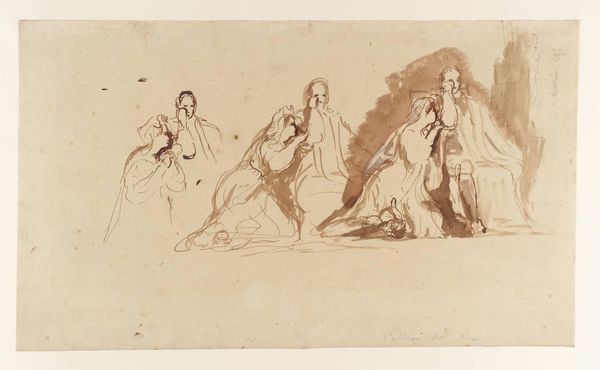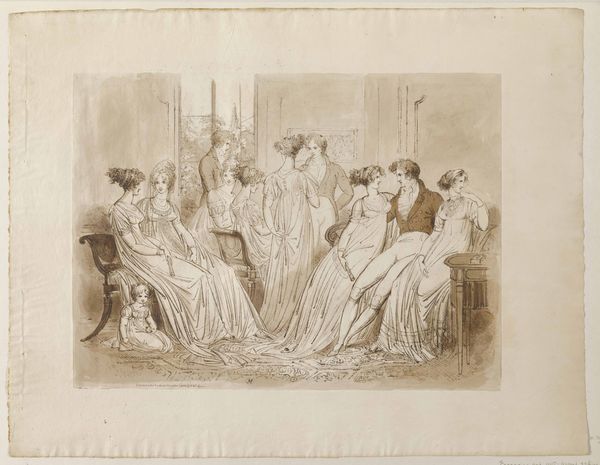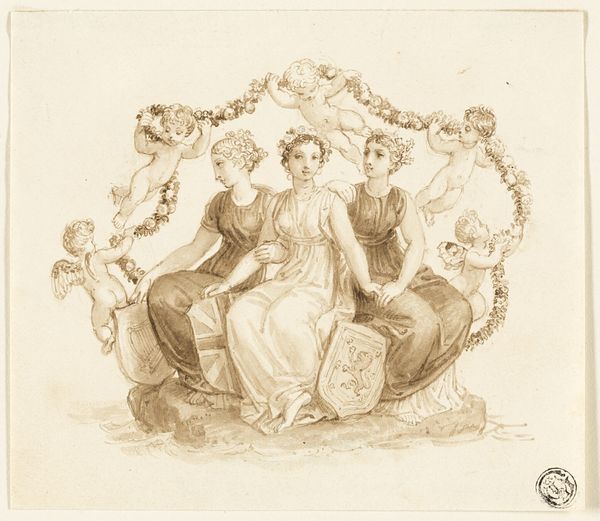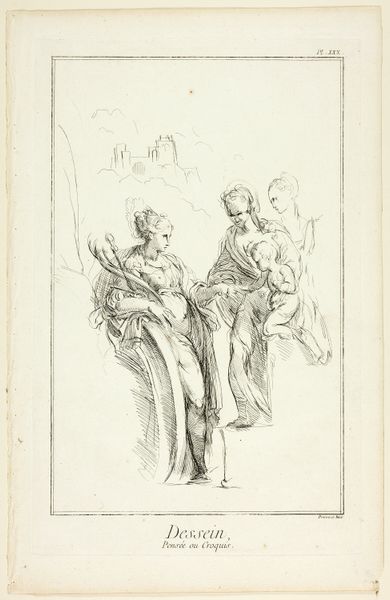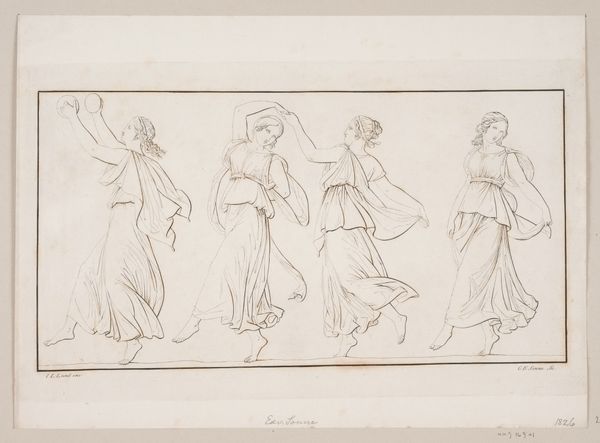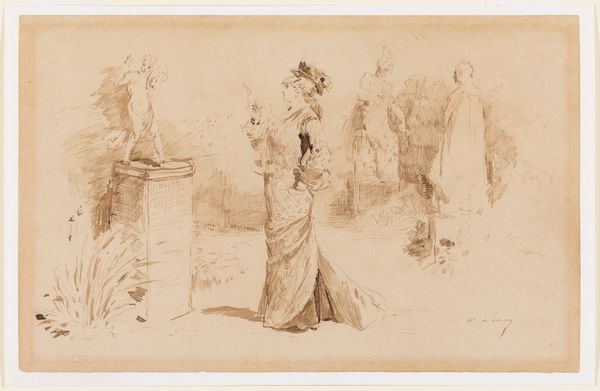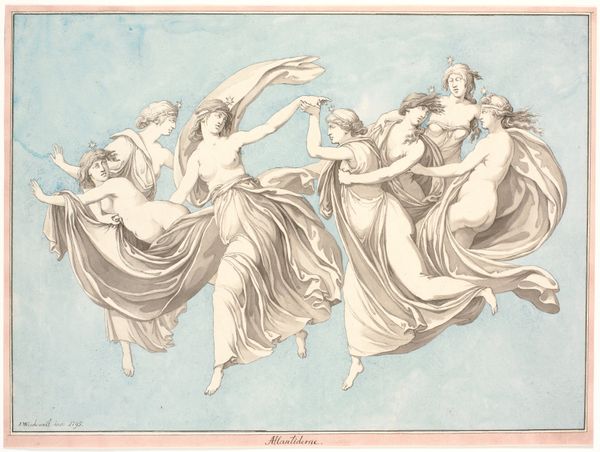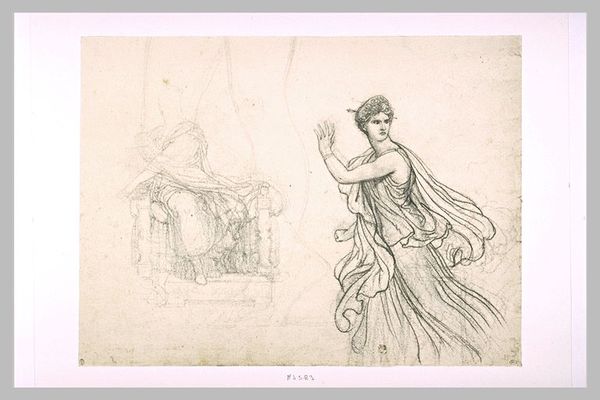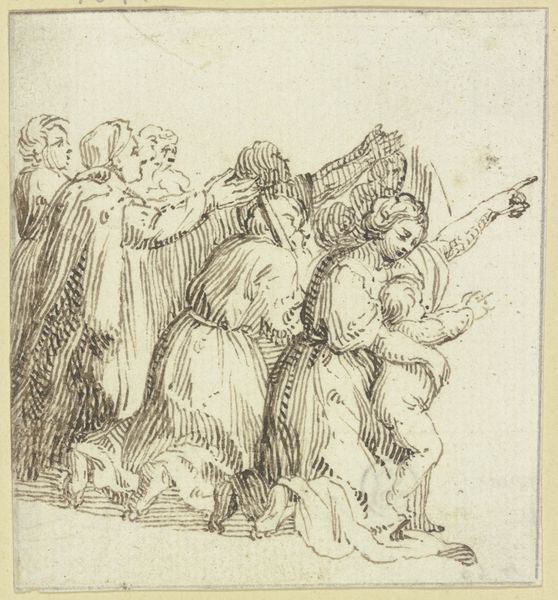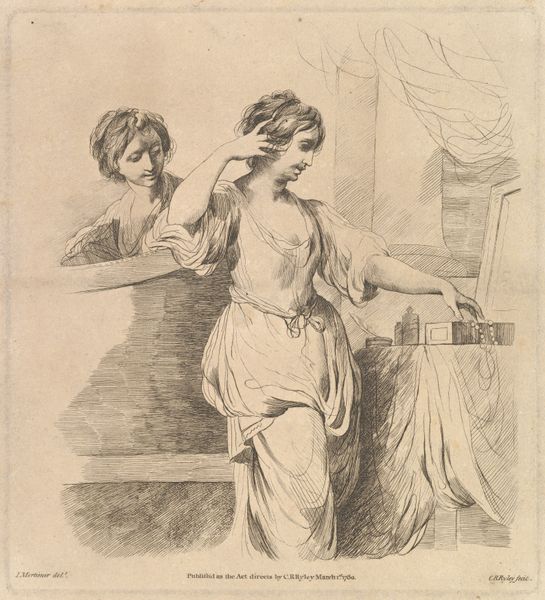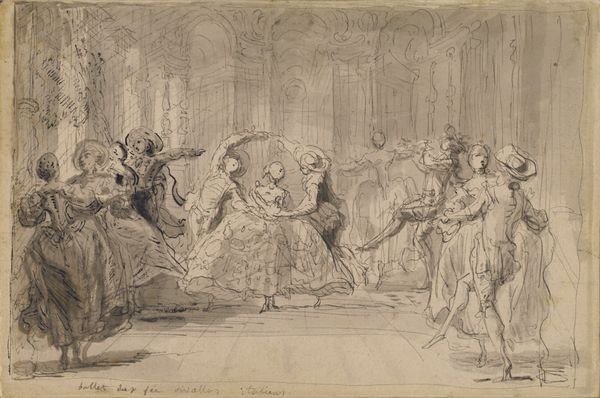
Illustration til "Den lille Havfrue" i H.C. Andersen, "Eventyr og Historier", Bind 1 1870 - 1873
0:00
0:00
Dimensions: 85 mm (height) x 92 mm (width) (bladmaal)
Curator: So melancholic, isn't it? The quiet tragedy of wanting something—no, *needing* something—so desperately it alters your very self. Editor: I see what you mean, but immediately I’m struck by how the rendering and reproduction through drawing and print emphasize accessibility, offering a Romantic ideal to a wider 19th-century audience beyond oil painting. Let's give our listeners some background. This piece is an illustration for Hans Christian Andersen’s "The Little Mermaid" created between 1870 and 1873 by H.P. Hansen, residing here at the SMK. It employs ink, predominantly, and embodies both the drawing and print mediums. Curator: Perfectly stated! And yes, there’s the tale laid bare: our little mermaid hesitantly stepping onto the shore, assisted—or perhaps haunted—by winged figures as she confronts her destiny. Her pale, unclothed form signals vulnerability; a tangible contrast to the story's often brutal exchange. What do you make of the multiple nude bodies on the coast? Editor: Beyond a symbolic reading related to Romanticism or a study of "nude" figuration, it shows a fascination for the production of bodies; that is, not just representations of flesh but images made for an economy of vision. The linear precision and repeatable form of "print" would have been paramount in its production. One wonders: were the laboring bodies that produced the print celebrated like this rendering? Curator: An excellent consideration. Perhaps the illustration softens a harsh reality by presenting beauty divorced from worldly labour. Editor: Quite possibly. Yet, the drawing process also serves a key function for the print economy; what the artist draws has an important connection to the reproducibility that the machine offers. It highlights a material transition from artist studio to broader publics. Curator: Well, Hansen manages to pull us into that crucial moment of transformation—isn't that what good stories are meant to do, to render magic believable through pen strokes? Editor: Precisely. By delving into these narrative tools, we unravel just how Andersen's poignant world, realized in print, reached and moved its contemporary audiences so effectively, as a consequence of material processes, rather than raw imagination.
Comments
No comments
Be the first to comment and join the conversation on the ultimate creative platform.


